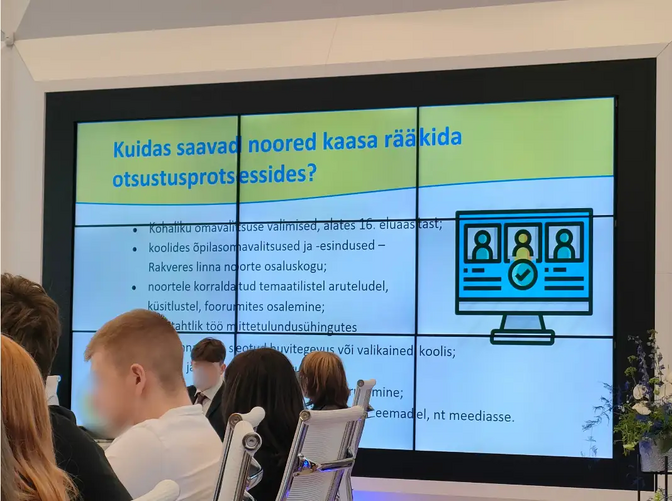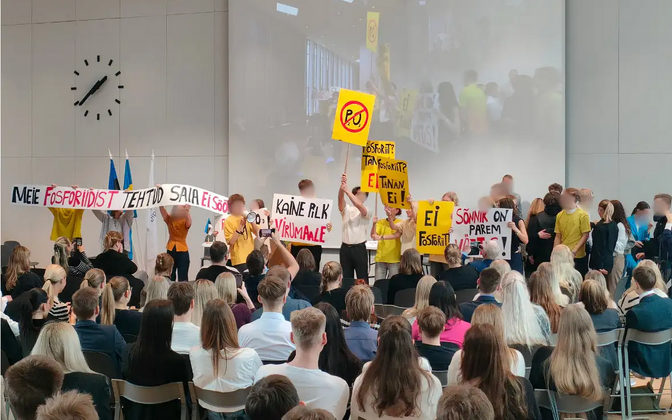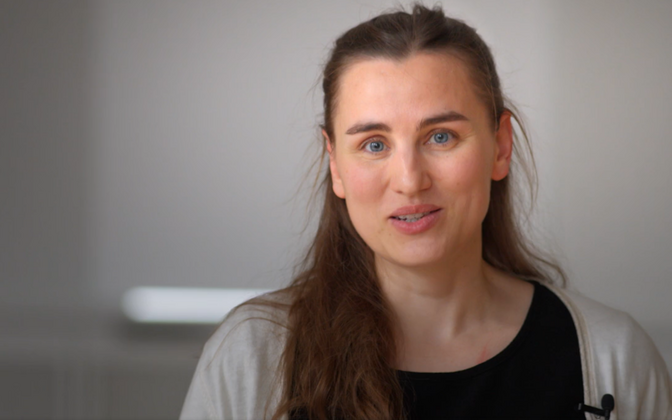Involving teens early is key to lifelong democratic habits, and Estonia’s schools can help inspire them to vote, says Tallinn University junior research fellow Maarja Hallik.
As of 2025, just over 47,800 Estonian teens ages 16–18 will be eligible to cast a ballot for the first time in the October 19 local elections. While many young people today express civic engagement through social media or activism, showing up to vote remains one of the most direct ways to help shape their communities.
Educators, youth workers and school leaders all have a hand in preparing students for that first trip to the polls. But that work shouldn’t fall only to civics teachers or be left until election season — it can be part of everyday learning.
Building real-world understanding
Schools play a key role in explaining how the state, democracy and elections work.
Beyond classroom lessons, in-person visits to local councils or government agencies — including participating in actual meetings or holding mock elections — can make those lessons more tangible. Research and experience show that young people better understand and value democracy when they see it in action.
Teachers can also nurture students’ curiosity about what’s happening around them — at home, in their community or across the country. That can mean using online voting tools, introducing political parties or discussing local issues that matter to them.
Strong media literacy and critical thinking skills are essential too. These help students assess whether political promises are realistic and understand which decisions are made at the local level versus by the state or the EU.
 Teens at Rakvere City Hall about to take part in a governance simulator. Source: Rakvere State High School/Proovikivi
Teens at Rakvere City Hall about to take part in a governance simulator. Source: Rakvere State High School/Proovikivi
Campaigns sometimes focus on topics outside local governments’ authority, so exploring local development plans or strategy documents can help young voters see what their city or town actually controls.
Giving young people a real say
One effective way to introduce political diversity is to organize school debates featuring representatives from different parties.
When doing so, schools should follow the “Good Election Practices” guidelines created by the Estonian National Youth Council (ENL) and the Ministry of Education and Research, which call for treating all parties, candidates and viewpoints equally and fairly.
Most importantly, research shows that when teens are given genuine chances to participate early on, they’re more likely to stay active in democracy later.
This could mean taking part in school participatory budgeting, joining student councils or tackling local issues through project-based learning (PBL). As one student said after such a project, they hadn’t realized they could make a difference at school without even being on the student council.
Schools can give students that same sense of agency — that their voice matters — and in doing so, help prepare the next generation of voters.
 An example of project-based learning (PBL): a student assembly about the various aspects involved in decision-making over phosphorite mining. Source: Rakvere State High School/Proovikivi
An example of project-based learning (PBL): a student assembly about the various aspects involved in decision-making over phosphorite mining. Source: Rakvere State High School/Proovikivi
—
